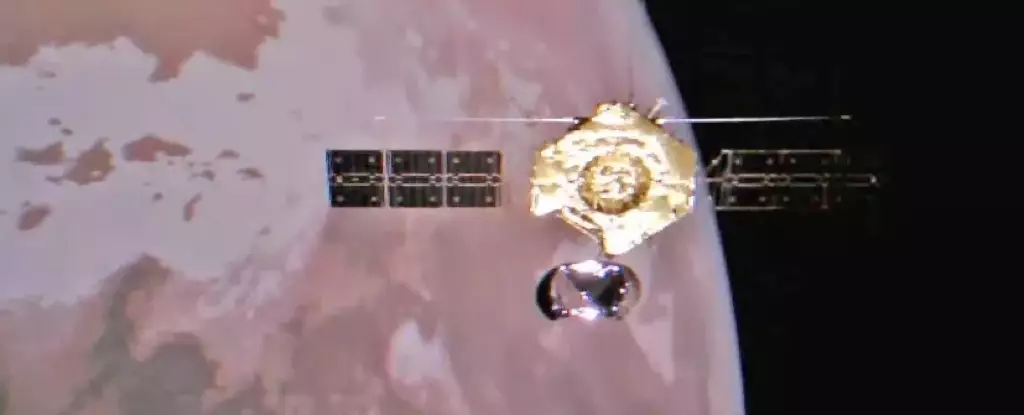China continues its ambitious space exploration program, aiming to become a major player in space exploration and compete directly with NASA. In addition to expanding its Tiangong space station and establishing the International Lunar Research Station, China plans to send crewed missions to Mars in the next decade. As part of the preparations for these missions, Chinese scientists have developed a new numerical model to simulate the atmospheric environment of Mars. This model, known as GoPlanet-Mars (GoMars), will provide crucial research support for China’s upcoming Tianwen-3 mission.
The recently published study in the Chinese Science Bulletin unveils the development of the GoPlanet-Mars model. Collaborating scientists from the Institute of Atmospheric Physics Chinese Academy of Sciences, the State Key Laboratory of Numerical Simulation of Atmospheric Science and Geohydrodynamics, and the School of Earth and Planetary Sciences at the University of Chinese Academy of Sciences led by Senior Researcher Wang Bin, specialize in climate modeling.
The Growing Need for Martian Weather Forecasts
With the increasing number of robotic missions exploring Mars and future crewed missions planned, the demand for Martian weather forecasts is growing. Currently, ten missions are studying the Martian surface and atmosphere, including orbiters, rovers, and even a helicopter. Access to accurate meteorological information on Mars is crucial for mission planning purposes, particularly for future crewed missions. Sandstorms, for instance, have caused mission failure in the past due to the build-up of dust. Wang emphasizes the importance of detailed atmospheric conditions for the upcoming Tianwen-3 mission, which involves landing, sampling, and returning from Mars.
The GoMars model provides information on meteorological conditions around potential landing sites, enabling scientists to design vehicles and select appropriate locations. By incorporating GoMars and future observations, scientists can create virtual reality simulations, reducing guesswork during mission planning. This tool will greatly enhance the success rate of various stages of a mission, such as entry, descent, and landing (EDL), surface operations, and the ascent phase for sample return missions.
The Martian dust cycle plays a crucial role, affecting various aspects of space missions. Wang draws a parallel between the dust cycle on Mars and the water cycle on Earth, highlighting its importance. GoMars can simulate dust activity, providing atmospheric environment data to analyze potential causes of issues, such as rover dormancy. In extreme cold temperatures, GoMars data can assist scientists in designing suitable materials to handle such conditions.
NASA and the European Space Agency (ESA) also have plans for Mars missions in the near future. The Mars Sample Return (MSR) mission aims to collect samples obtained by NASA’s Perseverance rover and bring them back to Earth. This mission, launching no sooner than 2033, aligns with NASA’s first crewed mission to Mars. The development of the GoPlanet-Mars model by China adds to the global efforts to overcome the challenges associated with Martian weather and provide critical data for future missions.
China’s continuous advancements in space exploration demonstrate its determination to become a superpower in space. The development of the GoPlanet-Mars model is a significant step forward, providing valuable insights into the atmospheric conditions of Mars. As more missions are planned to explore and eventually colonize Mars, accurate meteorological data will be essential for ensuring mission success. Through international collaboration and the development of advanced models like GoMars, scientists are inching closer to overcoming the hurdles of space exploration and expanding our understanding of the Red Planet.


Leave a Reply